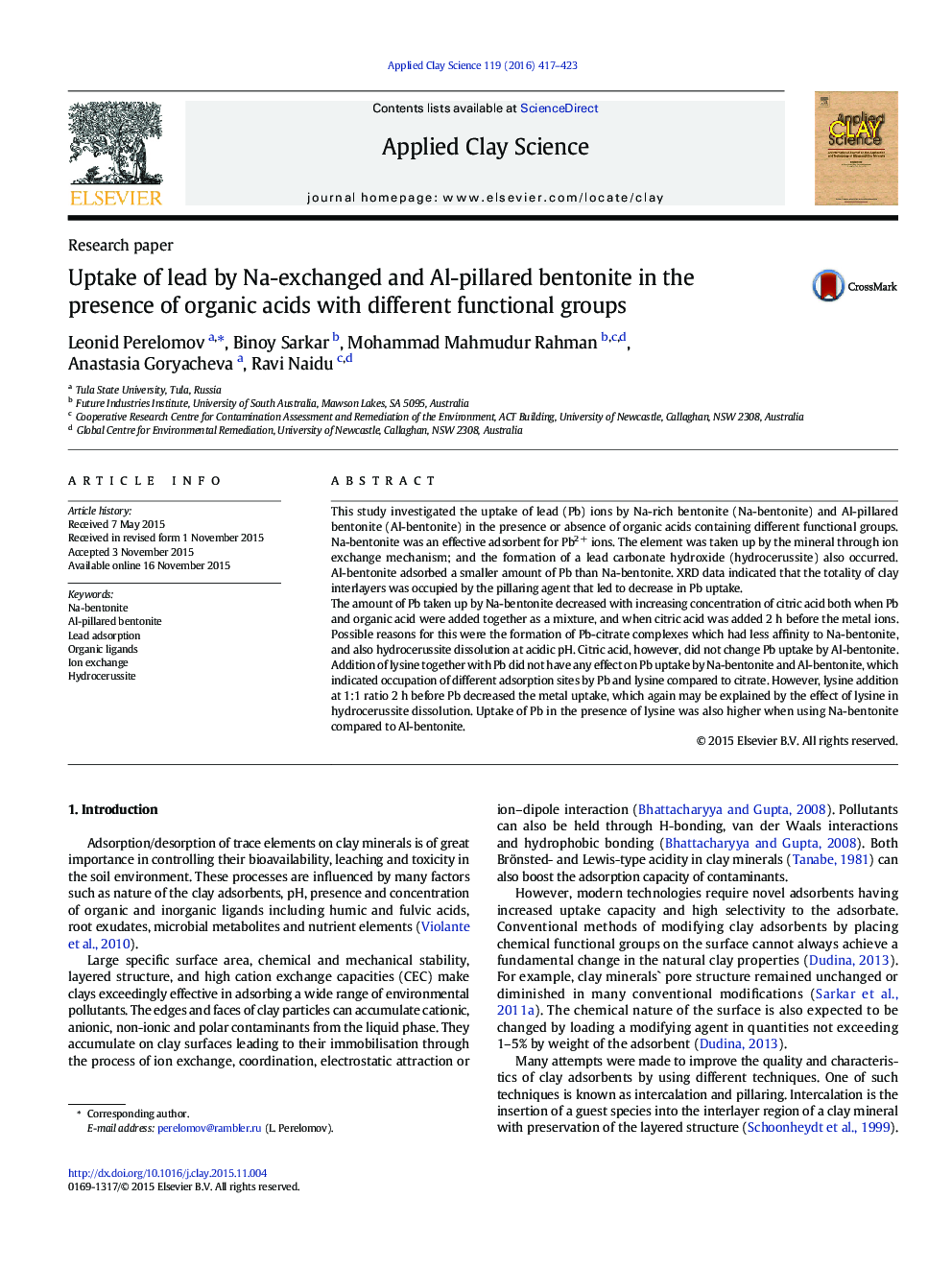| Article ID | Journal | Published Year | Pages | File Type |
|---|---|---|---|---|
| 1694236 | Applied Clay Science | 2016 | 7 Pages |
•Lead adsorption by Na-exchanged and Al-pillared bentonite studied•Variation in adsorption mechanism due to Na and Al in the exchange sites observed•Alteration of adsorption mechanism by dissimilar organic acids revealed•Complex environmental interaction of lead with bentonite discussed
This study investigated the uptake of lead (Pb) ions by Na-rich bentonite (Na-bentonite) and Al-pillared bentonite (Al-bentonite) in the presence or absence of organic acids containing different functional groups. Na-bentonite was an effective adsorbent for Pb2 + ions. The element was taken up by the mineral through ion exchange mechanism; and the formation of a lead carbonate hydroxide (hydrocerussite) also occurred. Al-bentonite adsorbed a smaller amount of Pb than Na-bentonite. XRD data indicated that the totality of clay interlayers was occupied by the pillaring agent that led to decrease in Pb uptake.The amount of Pb taken up by Na-bentonite decreased with increasing concentration of citric acid both when Pb and organic acid were added together as a mixture, and when citric acid was added 2 h before the metal ions. Possible reasons for this were the formation of Pb-citrate complexes which had less affinity to Na-bentonite, and also hydrocerussite dissolution at acidic pH. Citric acid, however, did not change Pb uptake by Al-bentonite.Addition of lysine together with Pb did not have any effect on Pb uptake by Na-bentonite and Al-bentonite, which indicated occupation of different adsorption sites by Pb and lysine compared to citrate. However, lysine addition at 1:1 ratio 2 h before Pb decreased the metal uptake, which again may be explained by the effect of lysine in hydrocerussite dissolution. Uptake of Pb in the presence of lysine was also higher when using Na-bentonite compared to Al-bentonite.
